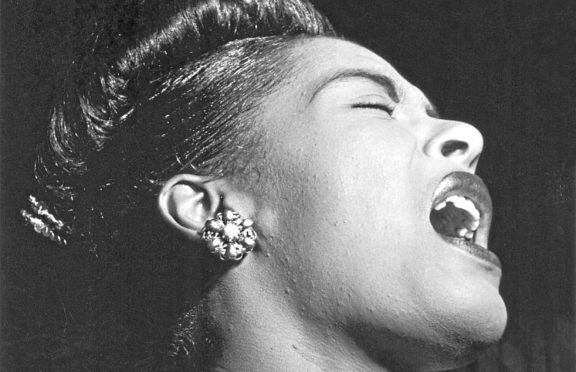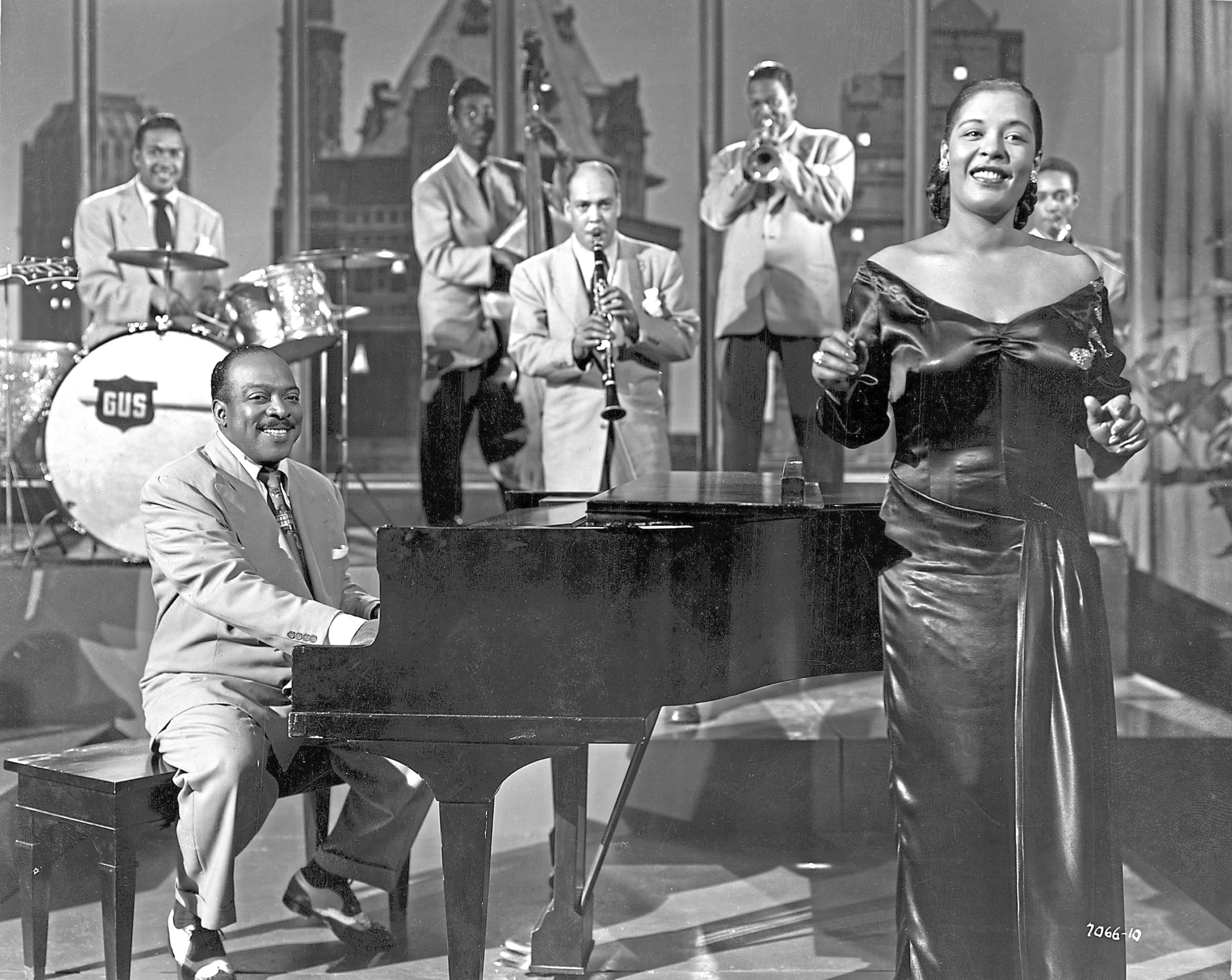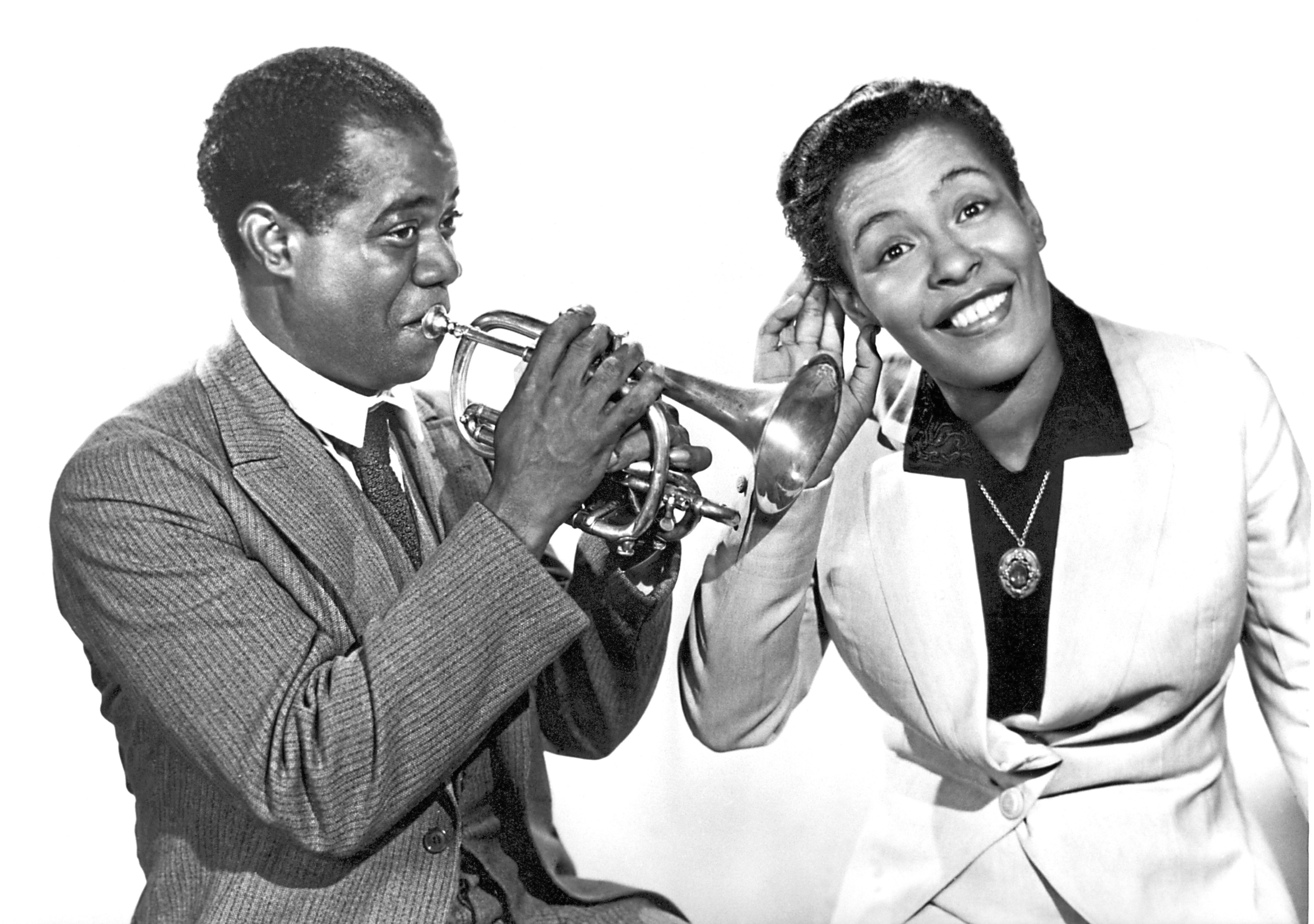
Towards the end of 1937 Billie Holiday was big enough to have a say in who she worked with and to choose her songs.
She spent a short time doing one-nighters at various clubs as a singer with Count Basie’s big band, and he admired how she knew exactly what she was looking for.
“It was a matter of getting her tunes like she wanted them,” he would explain, “because she knew how she wanted to sound and you couldn’t tell her what to do!”
Compared endlessly to the pretty incomparable Ella Fitzgerald, Billie was only too aware that a high standard had to be maintained, and she had to surround herself with the best musicians.
She and Ella would become firm friends, despite everyone loving to compare them. Indeed, some Battle of the Bands-style unofficial contests saw half the critics choose Holiday, the others choose Fitzgerald.
Oh, to have even one singer of that calibre at the top of her game today.
I Can’t Get Started, They Can’t Take That Away From Me and Swing It Brother Swing, all numbers Billie had done with Count Basie’s band, were recorded.
Sadly, she never got the chance to actually record with the great man himself, but she used as many of his musicians as she could.
Alas, being Billie Holiday, all this feelgood stuff couldn’t last forever, and by February the next year she’d been sacked.
Some have claimed she refused to do certain songs or to alter her style, while others reckon she’d behaved in a “temperamental, unreliable” manner.
Either way, she was out, although it didn’t take long until another great, Artie Shaw, hired her. It made her one of the first black women to work with a white orchestra.
It also made things hard for both Billie and Artie, who would fiercely leap to her defence when she had to face racism when they played in the South.
Billie, who admitted in her book that she was more than capable of lashing out when people crossed her, had to be dragged offstage when one Kentucky audience member shouted racist abuse at her.
Luckily for him, probably!
If the Southern USA was too racist to accept them completely, New York radio couldn’t broadcast them fast enough, and the Shaw-Holiday band even got extra slots to make more appearances on the airwaves.
Ironically, Artie’s set-up saw far more lengthy instrumental interludes, which obviously meant Billie sat it out for longer before singing again.
It did, however, seem to work, but it was racism rearing its ugly head once more that put paid to her days with Artie Shaw.
Told to use the service lift at the Lincoln Hotel as white guests had complained about her being in the normal lift, she quite rightly flipped.
Shortly after she quit the band, Billie revealed: “I was never allowed to visit the bar or the dining-room as did other members of the band. I was made to leave and enter through the kitchen.”
As 1939 approached, however, she had established herself as a great live act who could sing with all sorts of bands, and her recordings and singing style were much admired. Across the States, other singers were copying the Billie Holiday style, though nobody really got close to a convincing impersonation.
As we mentioned in last week’s first part, Billie’s recordings for the Columbia label remain among her very best, and many are surprisingly upbeat and happy.
And then came a song by the name of Strange Fruit. Written by a Jewish member of the American Communist Party, Abel Meeropol, under the pseudonym Lewis Allan, it was based on a harrowing poem about a lynching.
When Billie first did it in concert, she was afraid there might be an angry reaction, and she said it also reminded her of her father’s death. Having been exposed to mustard gas in the Great War, his lungs were in a dreadful state and when he collapsed in Texas while touring, they wouldn’t let him in the local hospital.
Pneumonia set in and killed him two days later, and in Billie’s head that same issue that always blighted her life was at the heart of it. No wonder, then, she was gripping the microphone nervously when she first sang Strange Fruit.
It would become one of the songs millions think of when they hear her name, and she would sing it in concerts for the rest of her life. And that’s despite the fact Columbia feared it was too controversial to touch, and she had to get another label to record it.
When she did it that first time, though, she got them to dim the lights, and had the waiters silence the audience. The lights went completely out as the song neared its end and when they came back on she had left the stage, presumably, hiding backstage, fingers crossed, and sweating. She needn’t have worried.
“It reminds me of how Pop died, but I have to keep singing it, not only because people ask for it, but because 20 years after Pop died the things that killed him are still happening in the South,” she would write.
As anyone who knows her music will testify, it’s an incredible, haunting, weird song, totally different from the rest of her stuff and a real dark classic.
Her popularity, in fact, went through the roof after Strange Fruit, to the extent that she could safely demand a rise.
The Forties would bring more success, praise and money, though her beloved mother showed that anything Billie made, she could spend.
Having helped her start a restaurant, Mom Holiday’s, Sadie would often ask and receive more money when she needed to do the place up or hire new staff.
When Billie herself ran short of cash, she assumed she could just go to the place and ask her mother for some money – but it didn’t work that way. Her mother turned her down, and ironically it led to another of Billie’s real classic songs. As mother and daughter yelled at each other, Billie screamed, “God bless the child that’s got his own!”
It wasn’t long before she and pianist Arthur Herzog composed a tune around the idea, and God Bless The Child became her most popular song.
It is also the song most covered by others, was third in 1941’s Billboard Songs of the Year, and sold over a million copies.
We can only guess how much money it made her, but we can safely assume Billie didn’t invest much of it in a certain restaurant.
Milt Gabler, who had owned Commodore Records – the ones who were brave enough to release Strange Fruit – also had a job with Decca, where he found and signed up singers and bands. When he got Billie on to Decca, she pleaded with him for something that really took him by surprise.
Strings.
Frank Sinatra and Ella Fitzgerald, of course, always sounded at their magnificent best with orchestras behind them – OK, that pair would sound good with silence – but it was an unusual idea for Billie Holiday’s style.
She really, really wanted it, though, admitting: “I went on my knees to him, I begged Milt and told him I had to have strings behind me.”
Walking into the studio to record Lover Man, she had no idea whether Gabler had gone along with her wishes or not. As soon as she set eyes on the string section, she rushed back out, tears of joy running down her face.
The same month, she was back to record That Ole Devil Called Love and Don’t Explain, which she wrote after catching husband Jimmy Monroe with lipstick on his collar. Billie had married the trombonist – “The most beautiful man I’d laid eyes on” – in August of 1941.
She would also cheat on him, with trumpeter Joe Guy, who supplied her drugs. She would divorce Monroe in 1947.
It was 1941, however, that proved such an interesting year for her, and not just because she met Jimmy.
The world of cinema, too, became wrapped up with the whole Billie Holiday story.
For one thing, Orson Welles adored her and her music, not to mention her company – even if others felt he should give her a wide berth.
“Orson was in Hollywood for the first time, like me,” Billie would reveal.
“I liked him and he liked me, and jazz. We started hanging around together.
“We’d head for Central Avenue, the Negro ghetto of Los Angeles, and I’d take him around all the joints and dives. I’d seen it before and was bored, but he loved it.”
Up to his ears, as she put it, making the future classic Citizen Kane, she described how incredibly busy Welles was. But never, it seems, too busy to go gallivanting with Lady Day.
“After we’d been seen together a few times I started getting phone calls at my hotel, telling me I was ruining Orson’s career by being seen with him,” she revealed.
She described in her book how it was acceptable to see a black woman stroll around American cities with a white female friend, but doing so with a white man could bring fury down upon you.
All a bit ironic, as Billie describes several incidents in which other women took a serious fancy to her, to the extent that one spent fortunes on gifts while trying to woo her.
She had to let that one down easy, although with more forceful suitors in prison, she simply had to thump them to show she liked men, not other women.
As you’ll see in the final part of our series on Billie Holiday, men and women across the globe were now in love with the glorious, tortured voice of Lady Day.
Around the corner lay even more success, and tragedy, too.

Enjoy the convenience of having The Sunday Post delivered as a digital ePaper straight to your smartphone, tablet or computer.
Subscribe for only £5.49 a month and enjoy all the benefits of the printed paper as a digital replica.
Subscribe © John D. Kisch/Separate Cinema Archive/Getty Images
© John D. Kisch/Separate Cinema Archive/Getty Images © JP Jazz Archive/Redferns
© JP Jazz Archive/Redferns